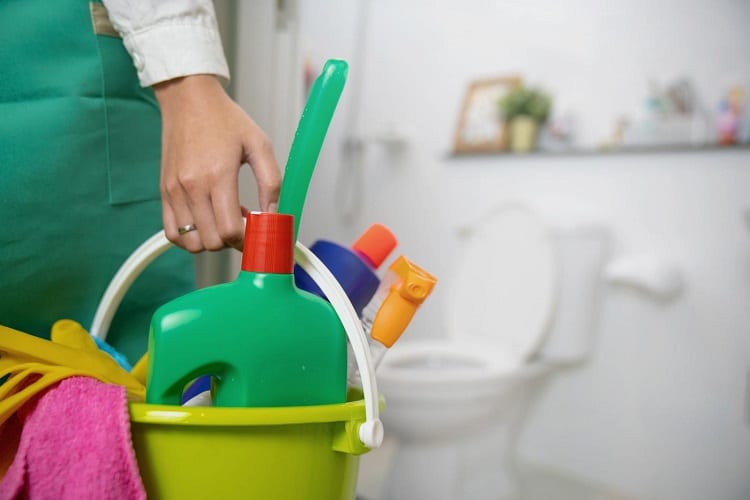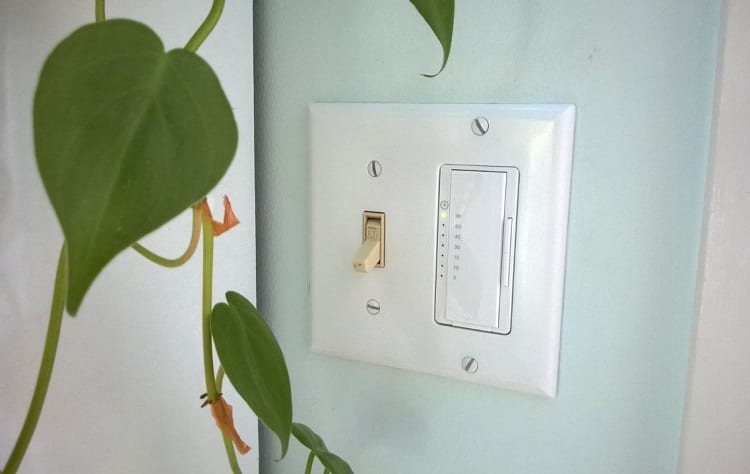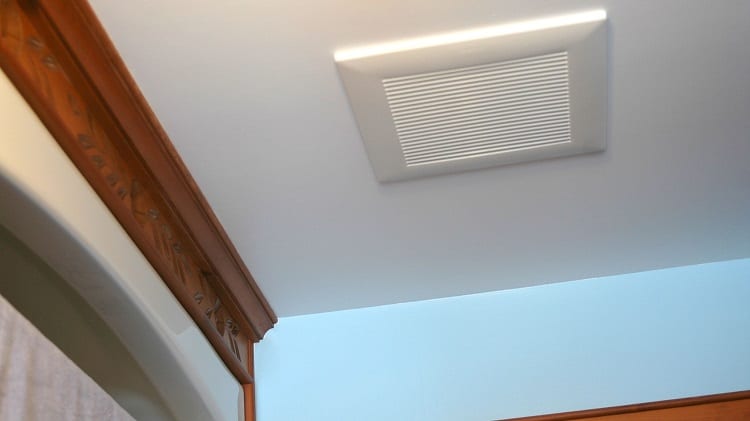It’s hard to imagine a house without a bathroom.
Regardless of its size, a bathroom is undoubtedly the most important room in a house.
It is a safe space that allows individuals to get momentary peace from the constant buzz of the world and stresses of their daily lives with a nice, hot shower or a long scented bubble bath.
Since bathrooms hold so much importance in houses, it stands to reason why homeowners prefer to keep them clean, install key components, and beautify them with lovely accessories.
Bathrooms primarily consist of a sink, a bathtub, shower, and toilet.
But that’s not all. One of the most crucial components that most modern bathrooms can’t really do without is a bathroom fan.
Surprised?
Well, you may not know this, but bathroom fans are quite an important feature in a bathroom.
Having a well-installed fan in your bathroom can prove to be incredibly useful in many ways.
Read this blog post to discover the purpose of having a bathroom fan, when you should use it, how to connect it, and lots more.
Why Do Bathrooms Need Fans?
To Help Remove Moisture

Most slip-and-fall accidents occur in bathrooms.
While there can be quite a few reasons for this type of accident, it usually happens when the floor of a bathroom is wet.
A bathroom usually gets wet when you clean it or take a shower, and some water spills out onto the floor.
If there is no fan in your bathroom, it may take time for the walls and the floor to get dry.
This can be a problem as the slippery floor can cause you to slip and fall.
However, with an exhaust fan in your bathroom, the moisture evaporates pretty quickly, and you get a dry bathroom.
To Eliminate Odors
Many modern vent fans come with honeycomb carbon filters that help absorb all kinds of odors.
These fans do a remarkable job of eliminating bad smells on their own – a more convenient option than using an air-freshener.
To Reduces Humidity
Bathrooms that feature a window usually lack a vent fan.
This can be useful in the summer months when you can open the window and get rid of the humidity.
However, it is usually in fall or winter that a shower produces the most steam and moisture, and no one really wants to crack open a window in these chilly seasons.
That’s when you can benefit the most from the vent fan in your bathroom.
To Help Get Rid of Airborne Contaminants

Homeowners usually clean their bathrooms with harsh chemicals that can be inhaled by anyone who uses the bathroom.
When these chemicals are accidentally inhaled, they can cause a lot of health problems in children and adults.
If the bathroom already has a mold and mildew issue, a fan will prevent their buildup and hinder their growth rate.
When to Use a Bathroom Fan
Vent fans are a necessary feature of any bathroom and can come in handy on many occasions.
If you have a well-functioning bathroom fan (or bathroom fans), you should turn it on every time you step out of the shower.
You don’t want to leave behind your bathroom all wet for the next person, as it can be quite dangerous (as we discussed earlier).
Keeping your bathroom dry and clean is also an important step when it comes to its maintenance.
You can also use the exhaust fan to remove excess moisture that may accumulate on your walls and mirrors as a result of fog in the bathroom.
Of course, this usually happens when you take a steamy shower in winter and can’t think of opening your bathroom window in the tethering cold.
As water builds up on non-moisture resistant objects, such as wooden cabinets, doors, wallboards, etc., it results in peeling and warping.
The continuous buildup of moisture leads to the growth of mold and mildew that can contribute to airborne diseases such as influenza, measles, smallpox, tuberculosis, etc.
An exhaust fan also helps control odors. If any unpleasant smell permeates through the bathroom, the exhaust fan instantly eliminates it.
This helps the bathroom stay neat, fresh, and well-maintained.
How Long Should Bathroom Fans be on After a Shower?

The Home Ventilation Institute suggests that a bathroom fan should stay on for at least 20 minutes.
This is long enough to remove moisture and humidity from your bathroom.
This will also help warm up your bathroom in the cold season, so you won’t have to open the window.
How to Connect Your Fan with Your Bathroom Lighting?
Bath exhaust fans with built-in lights are pretty common.
If your light and vent fan are separate fixtures, but you want to hook them up together, you can do it with the help of a wire.
Here’s a comprehensive guide to attaching your bath fan to your bath lights.
Things You Will Need
- A ladder
- A set of pliers
- Knife
- Wirecutter
- Electrical cable
- Voltage tester
- Screwdriver
- Wire connectors
The process
- First, turn off the power circuit of the fan and the light. This is an important safety precaution to take before starting the DIY electrical wiring process.
- To ensure that you successfully shut down the circuit breaker, test the wires using a voltage tester. For that, you will need to unscrew the cover of the light bulb’s fixture. You can get to this fixture with the help of a ladder.
- Using a screwdriver, unscrew the screws of the cover plate. Pull the cover down slightly, just enough to get a peek at the circuit wires. Touch the wires using a voltage tester to check for a beep or a flash. If you witness either of the two or both, it means the power circuit is still on. Stop the process immediately and turn the circuit off.
- You have to untwist the two black wires and white wires that are typically wired together in a counter-clockwise pattern. It is better to undo them using a pair of pliers.
- Straighten the wires as much as you can and then unscrew the ground screw to free the ground wire in the same box.
- Run the bath fan’s cable to the box in the ceiling. But if your electrical cable is not long enough to pass from the ceiling to the box, you will have to resolve this with a more complex wire-routing system. In this case, it is better to call for professional help.
- Mount the ladder again and wire the ends of the black and white cables to the fan’s wire in the box. Also, screw a copper wire to the fan’s grounding screw. Make sure this wiring system abides by the fan manufacturer’s manual.
- Now, cut off the ends of the electrical cable to about 5 to 6 inches long. Do this with the help of a knife or a wirecutter.
- Straighten the ends of the cables and then connect them with the black wires of the newly-run cable of the fan. Repeat this procedure with the white wires.
- Twist the wires tightly in a clockwise direction using a set of pliers.
- Once the wiring is done, fix back the plate of the house box back to its place.
- Switch on the power circuit and check whether the fan and light begin working simultaneously.
Is It Important for Every Bathroom to Have a Vent Fan?

Having a vent fan in a bathroom is always better than not having one at all.
However, in many parts of the country, building regulations do not allow the installation of a vent fan in bathrooms that have a functional window already.
Despite that, we still believe that whether a bathroom has a window or not, it should definitely have a fan.
While a window is also a source of ventilation, you can’t always use it, especially in the windy or cold season.
By keeping the window open, your bathroom can easily become dusty and dirty.
In the chilly weather conditions, the bathroom can also become unbearably cold.
Conclusion
Installing a vent fan in the bathroom is always a good idea.
Even if not required, it can be a great addition. Operational bathroom fans play a crucial role in keeping the space dry, neat, and clean.
You will also observe a change in the atmosphere of your bathroom – it will be much fresher and welcoming.
If your bathroom doesn’t feature a fan already, don’t worry.
Installing it is a simple DIY electrical task that you can perform with little technical knowledge or experience.
However, a word of warning here; you should call a professional to perform the task for you.
